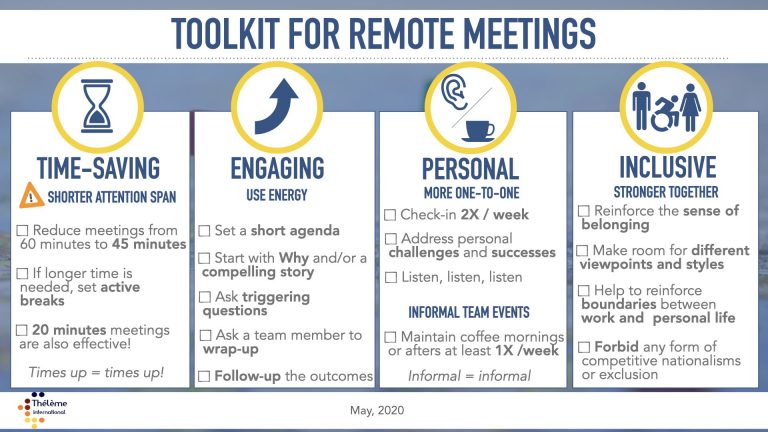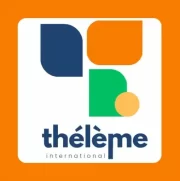Remote Working: Part 3 — How leaders can support cohesion and agility when teams are apart?

March 2020. When her company makes remote-working compulsory, Laura and her team are confident: all of them are Zoom, Slack, Google Drive veterans, and all of them regularly work from home. Furthermore, their global clients are familiar with online communication. On top of this, the industry is growing.
April 1-15 2020: Laura notices a shift. Not only do business partners send grim messages, but the team seems less responsive. One of her reports, Kristin, the manager we already met, raises slight concerns about her team. Tom, the high-achiever, bursts out more than ever. Simon, identified as high-potential, is a different person and seems unable to steer his sales-team.
April 15-30 2020: Laura is concerned. The revised business expectations for 2020 predict a 0% growth. Simon’s spouse has tested positive to Covid-19 and can not take care of their hyperactive 7 years old.
End April 2020: Laura calls us. “Amid uncertainty and an ever-evolving situation, inertia is not an option. We need to accelerate agility, inclusion, collaboration, and accountability.”
A golden opportunity to embed agility
As the all-hands-on-deck period has reached its end, more sustainable ways to organize work, make decisions, and create value are to be emboldened. To foster speed and agility across Laura’s organization, we have decided to set up two small workgroups. Their composition had to be cross-functional, cross-level, and diverse. Both groups had to provide coherent deliverables in 5 days. One group had to design handy guidelines for remote-working based on the strengths and challenges met by the employees, the other to develop a toolkit to accelerate safety and agility.
Purpose, belonging, trust
Along with the concerns already identified by Kristin and Laura, the first workgroup mapped positive outcomes. For many staff-members, no commute means more time to reflect and focus. Agile approaches, if not entrenched and generalized across the organization, are already known. New talents, often from the diversity group, are emerging.
Overall, they felt the urgent need to reinforce cohesion and ownership among the remote staff. Subsequently, rather than guidelines, the workgroup provided the team with triggering questions around three steering dimensions:
Purpose
Who are we?
What are our values?
Why do we do what we do?
Belonging
What makes us… us?
How do we relate and care for each other?
How do we capitalize on our diversity?
How inclusive are we?
How will we overcome the coming storm together?
Trust
How do we better serve our clients in challenging times?
How do we bolster trust with global partners and clients?
Equip the teams with practical tools
As for the second workgroup, they addressed the same dimensions while being focused on practicalities. As such, they delivered a toolkit for online meetings: along with a practical tool came a concise, interactive online training given in May by external trainers and staffers.
Again, speed, agility, belonging, and trust were at the core of the actions.
As you are curious at this point, this is a visual of the toolkit.

Despite Laura’s concerns not vanishing all of a sudden, she was surprised to witness new energy spreading through her organization. “Rather than a compelling narrative and bureaucratic guidelines, you helped us to ask powerful questions for our teams to reflect on. No revolution came out of it. But the level of energy is incredible, and mutual support across the organization has risen. Kristin is much more positive about her team. Tom seemed reassured… so far! Some personal worries are still there, but we support our team members as much as we can. And new talents are popping up!”
Of course, it is far too soon, and unknowns are far too numerous to announce a transformational shift. However, concrete and engaging actions have spread some agility. If your organization seems bogged in uncertainty, why not call us for a quick assessment of the situation?



